SALVADOR DE BAHIA
To connect the upper and lower parts of the city, there’s a 60-meter drop. The “planos inclinados” — steep funiculars — run constantly. Fast, almost silent. A short ride, but a striking shift. Between two levels, the city shows different faces.
From the plane, the scale is obvious. A massive, sprawling city stretching toward the sea. Skyscrapers facing the ocean, hills packed with tight, colorful favelas. Founded in the 16th century. Once a Portuguese trading post, key to the exploitation of brazilwood (pau-brasil), prized for its deep red core. Early colonization. Early slave trade.
In our place, no glass windows. Just wooden shutters. Air flows in freely. So do the sounds. Music, voices, frying food, scooter engines. We sleep with the city all around us. No insulation needed — the climate takes care of it.
Here, everything revolves around music. It’s not just in bars or parties. It spills out everywhere. It sets the rhythm for the streets, the people, the days. In Bahia, music is the law of gravity.
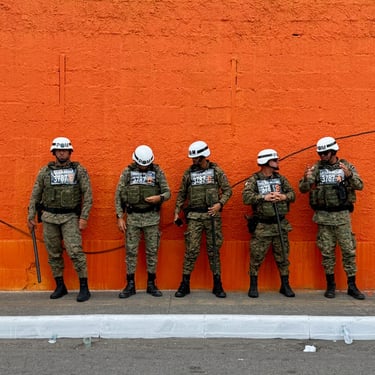
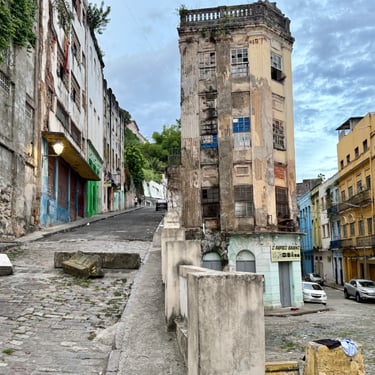
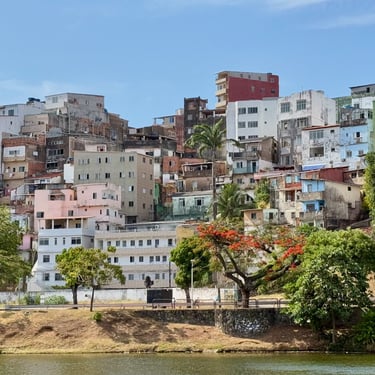
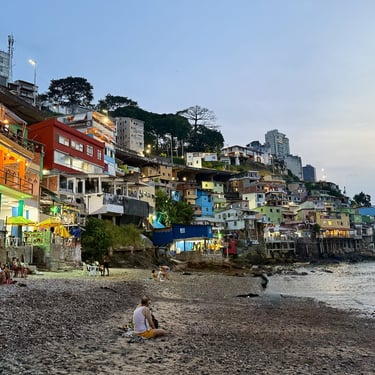
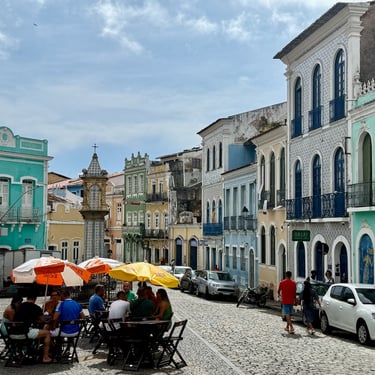
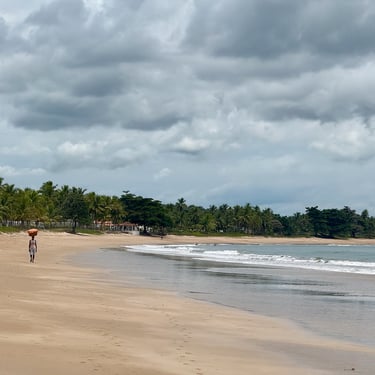
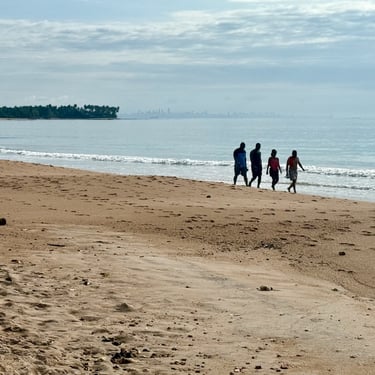
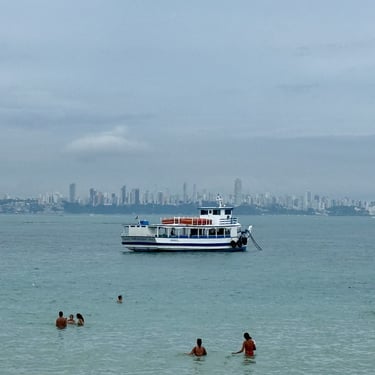
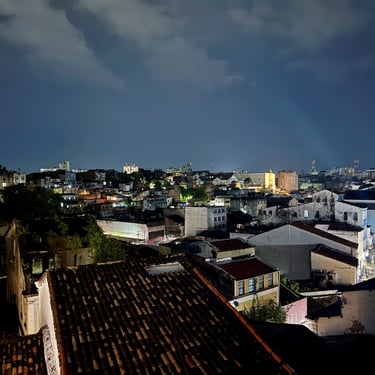
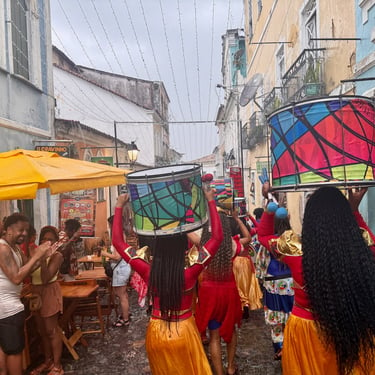
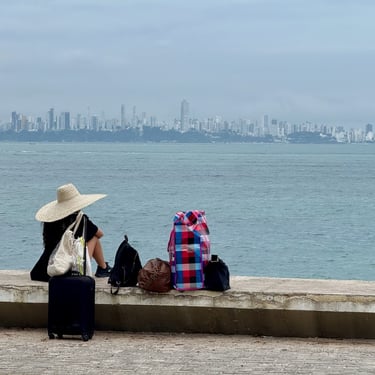
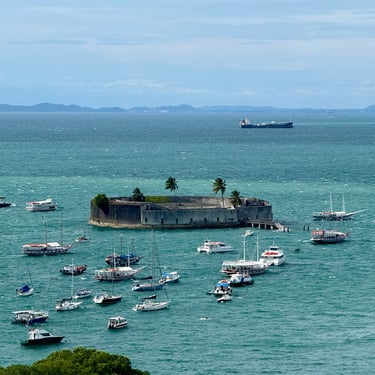
Bahia is constant intensity. Beauty and hardship. Celebration and struggle. Laughter and pain. Emotions run high. People move with force. Nothing is neutral. Everything pulses.
Many facades are covered in ceramic tiles. A beautiful and practical choice. The tiles protect the walls from endless humidity. Local solution, simple and efficient. A visual identity.
Around 7pm, trash bags are placed at the corner of the block. Heat has eased. During the night, people pass by, collecting whatever can be reused. By morning, everything’s gone. The streets are clean. A discreet, unofficial system that works.
The Orishas are present everywhere. Spirits from Africa, brought by enslaved people from Benin, Nigeria, Angola. Still alive in rituals, clothes, altars. Candomblé keeps the connection intact. A spiritual memory rooted deep.
To reach Monica’s bar, you walk through a favela between the highway and the sea. She cooks, serves, arranges tables. Others sell caipirinhas, coconut water, cold beers. A small ecosystem comes alive each evening. Everyone has a role. Nothing official, but everything runs.
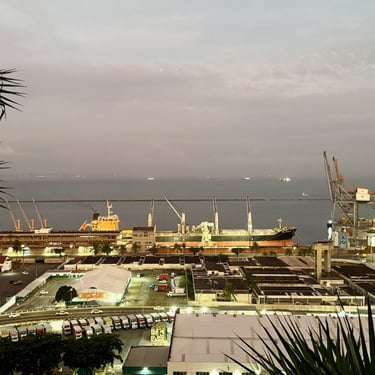
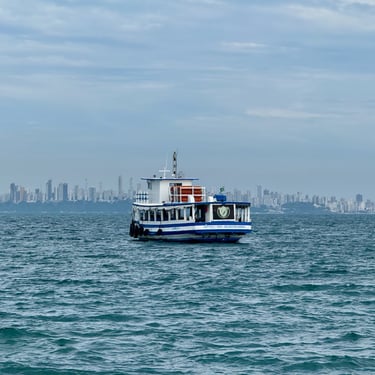
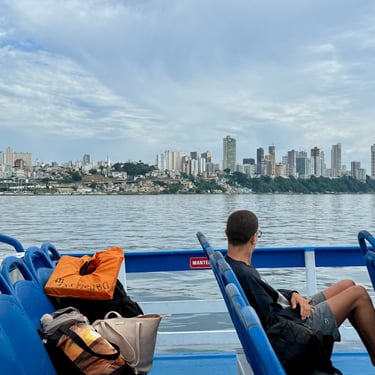
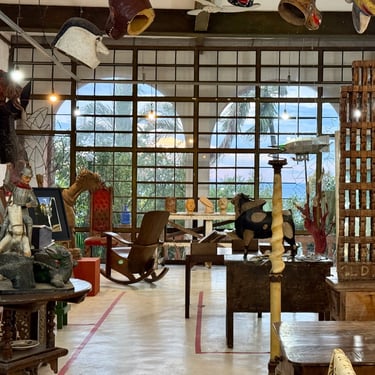
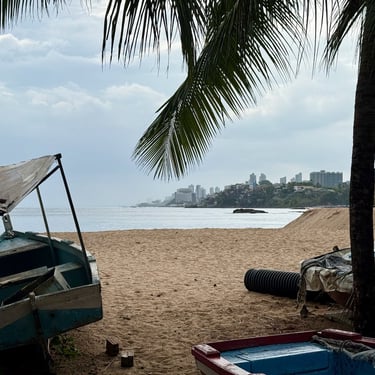
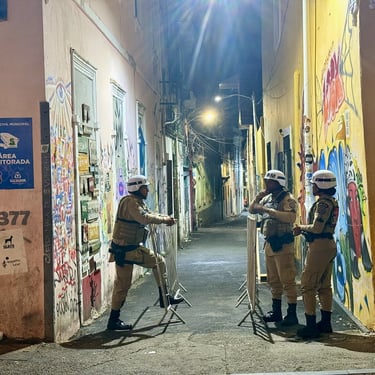
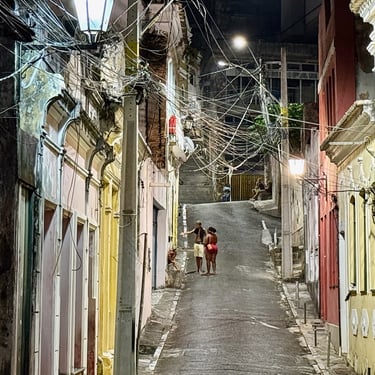
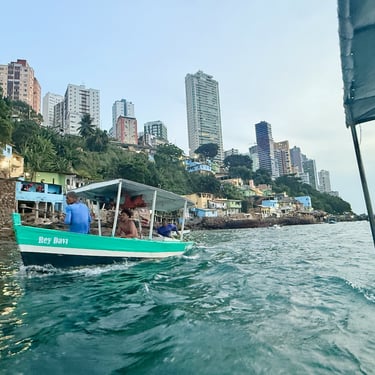
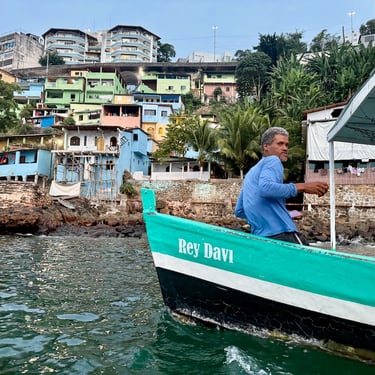
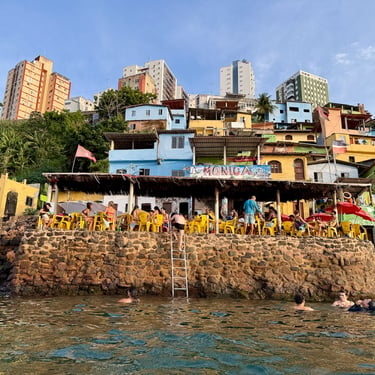
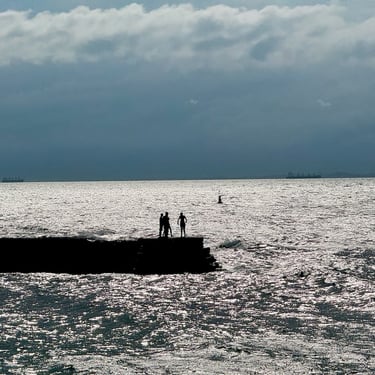
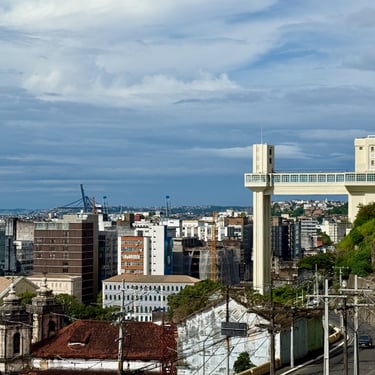
Outside the bars, the party spills onto the sidewalks. Mobile stands appear, selling drinks to passersby. A parallel economy lights up the night. Improvised, vibrant, unregulated — but steady.
The tourist area is clearly marked. Restored colonial quarters, clean streets, guarded access. Just behind, older, neglected neighborhoods. Over 80% of the population identifies as of African descent. The legacy of slavery is still visible. Still tangible.
No one walks around with Headphone. Music here is shared. Played loud, carried by speakers, open to the world. Not private. Not selfish. It lives in public.
On the coastal road, police on motorbikes patrol constantly. Posted at every crossing. It can feel safe. Or watched. Depends on the perspective. Their presence is deliberate.
A downtown festival. Police at every access point. Bag checks, metal barriers. Then the rain comes. Officers disappear into nearby shops. The fences stay. Entrances open up. They’ve built a small awning over their truck — more for shade than for duty.
Music fills the center. Drummers, dancers, processions. Rhythms inspired by African rituals. Then, distant church bells. Two spiritual worlds coexisting. One rhythm. One breath.
“Positive energy” — a phrase that comes back everywhere. At concerts, in street conversations, in favelas. Like a shield. Our friend from the neighborhood kept repeating it. A mantra to push the dark away.
Cash isn’t welcomed. Servers prefer cards, or Pix — Brazil’s instant payment system. Digital rules. Fast, easy, integrated.
Fiat cars are everywhere. Small, sturdy, cheap. In every neighborhood. A quiet domination. A street emblem.
As bars get busy, homeless men pass between the tables. Collecting empty cans in plastic bags. No one reacts. A quiet routine. Informal recycling. Normal. Necessary.
The language here carries African rhythm. Yoruba words in everyday speech. It shows in tone, in accent, in vocabulary. Bahia speaks its history.
Our host tells us most people have two phones. One they hide. One they’re ready to give if they get robbed. A plan B. A survival tactic.
Nearly 45% of people live in favelas. Not a margin. A core part of the city. An entire way of living.
Many cars run on a hybrid system: gasoline and gas. A metal tank in the trunk feeds the engine. Cheaper, practical. Adapted to local needs. Built from necessity.
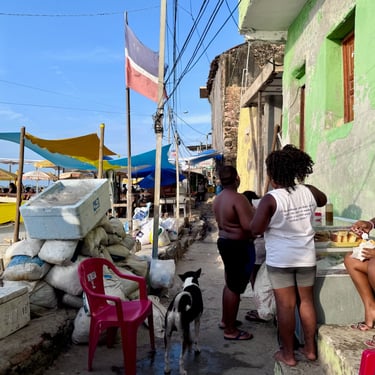
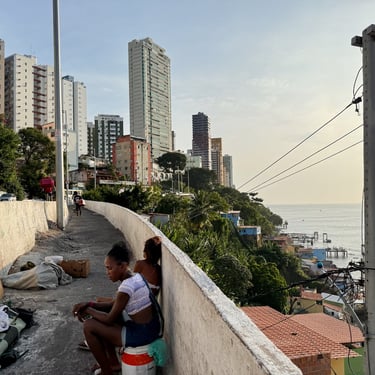
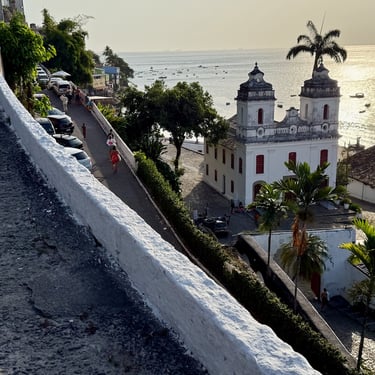
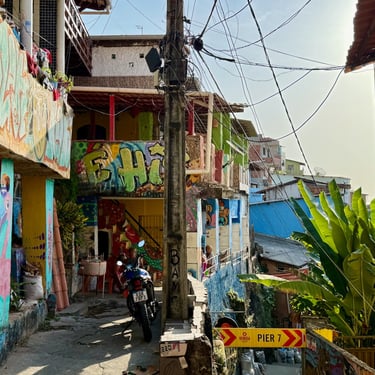
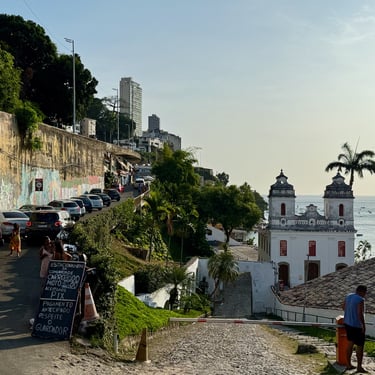
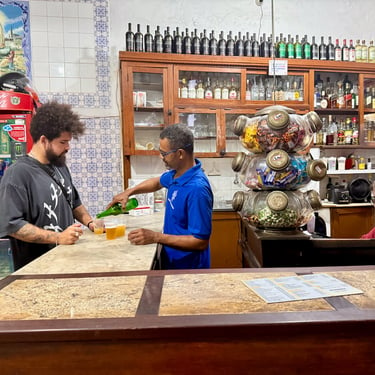
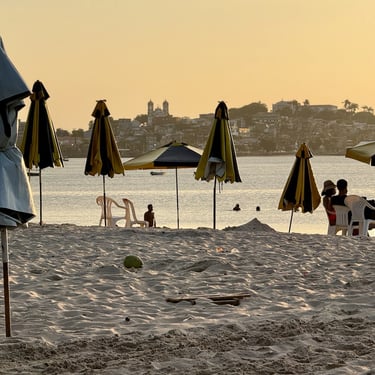
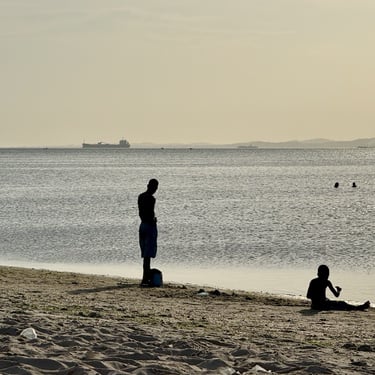
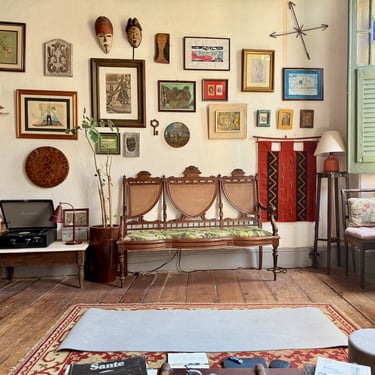
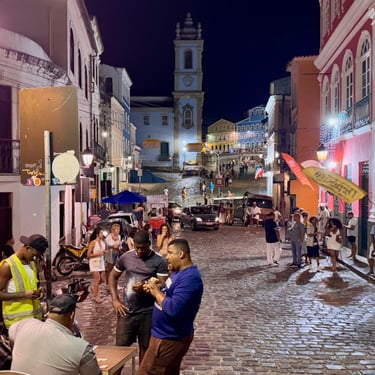
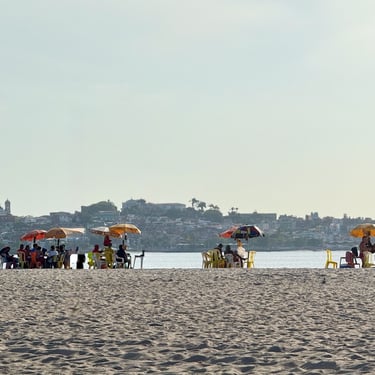
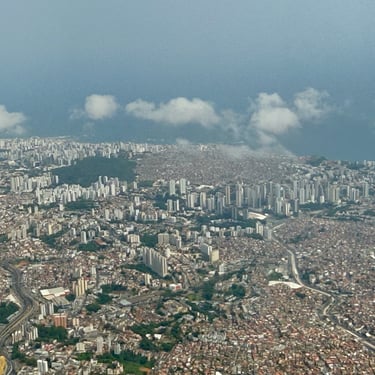
Places
Maria Mata Mouro Restaurante
https://maps.app.goo.gl/qAhzJgJ9ewXRcy9v5
Praia da Fonte do Boi
https://maps.app.goo.gl/Q6vpvSPtm1CPezJf9
Casa BATEKOO
https://maps.app.goo.gl/MLvRKw7mrCypNoGPA
Monica´s Bar
https://maps.app.goo.gl/hzoDHuShmwY8xxSf6
Dona Mariquita - Cozinha Patrimonial da Bahia
Praia da Penha
https://maps.app.goo.gl/RuRSBAUyZkx8oqCRA
Forneria do Santo
https://maps.app.goo.gl/ucDifw1XcqSzTs7V8
Feira de São Joaquim
https://maps.app.goo.gl/bTV6HBBvp2VEzLCk9
Café e Cana Botequim
https://maps.app.goo.gl/7WLQZFZUYubyY2t18
Vinil do Mustafá